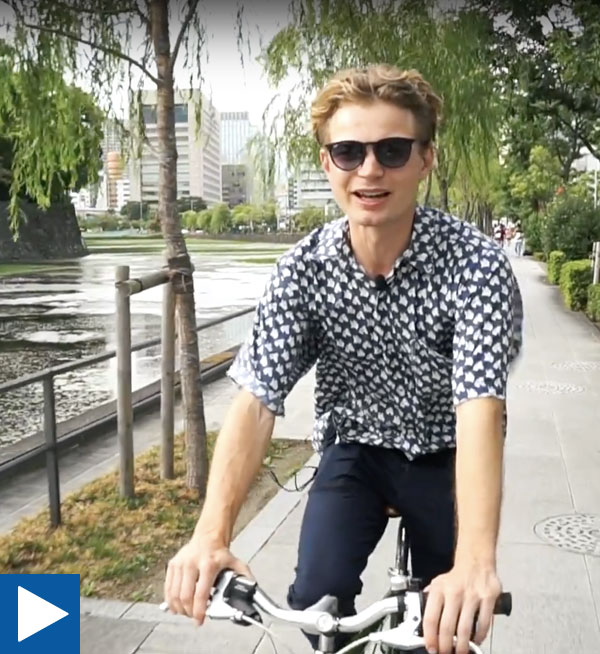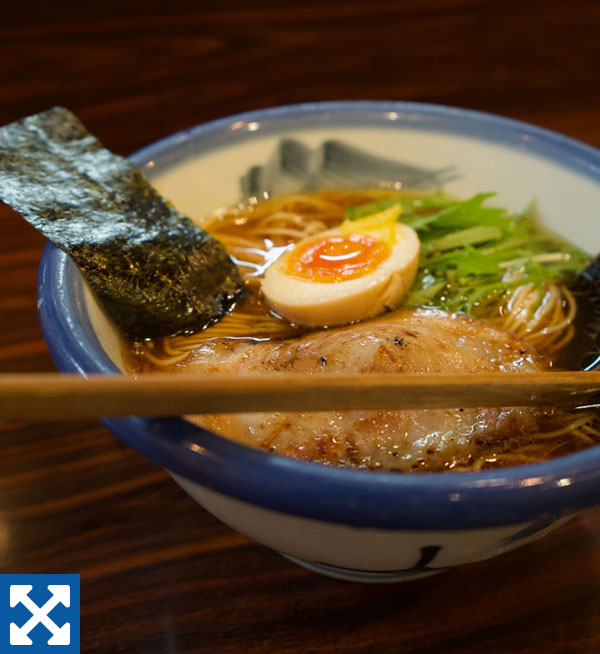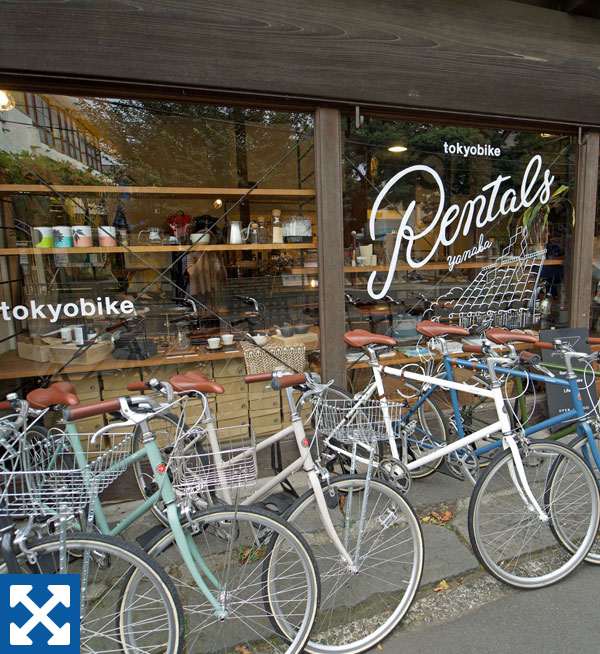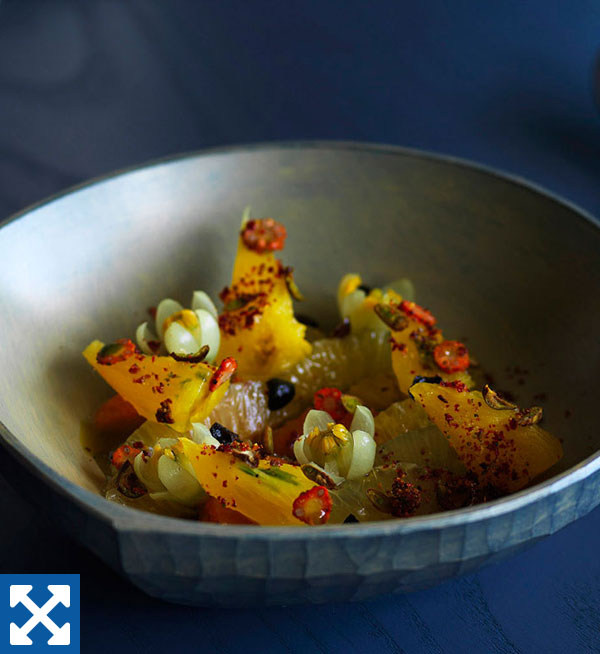Counting down to the Rugby World Cup 2019 … in Japan!
LIFE
A weekend in Tokyo
Unrivaled energy, cuisine and cultureTokyo Tower with Tokyo Bay in the background. OSCAR BOYD
Distraction awaits round every corner
in Japan’s bustling capital
OSCAR BOYD
Staff writer
When planning a weekend in Tokyo, be ready to accept defeat: It is simply not possible to see everything.
Tokyo remains the largest city on the planet with a metropolitan area that is home to some 38 million people. It is defined by this vast populace, sprawling both horizontally and vertically in its efforts to accommodate its citizens and the establishments they frequent.
With a well-crafted itinerary, though, the weekend visitor can get a genuine feel for the city and begin to grasp the lay of the land. Tokyo is crowded, busy, hectic, yes. But it is also infectious and, by the end of a weekend here, you’ll struggle to tear yourself away.
Friday
Tranquility among madness — morning
Step off the plane and enter Tokyo. Endless opportunities abound and many flock straight for the frenetic bustle of Shibuya Crossing. But a far more appealing introduction to the city lies in the leafy grounds of Meiji Shrine (Yoyogikamizonocho 1-1, Shibuya-ku).
Dedicated to the deified spirits of Emperor Meiji and Empress Shoken, the shrine is one of the city’s most impressive examples of Shinto architecture and is surrounded by extensive grounds. For the full experience, pass through the shrine’s southern torii gate, a short walk from Harajuku Station, and walk the promenade to the main hall.
Food for all occasions — lunch
There are dozens of excellent restaurants in the area between Harajuku and Omotesando. Start your trip the right way with a bowl of noodles from Afuri’s Harajuku ramen shop (1F Grandeforesta, Sendagaya 3-63-1, Shibuya-ku). This is not your bog-standard ramen; the shop serves its soup with a heavy infusion of yuzu citrus. The shop has a broad menu that includes a vegan ramen that changes with the season.
Closer to Omotesando Station is Commune 2nd (Minamiaoyama 3-13, Minato-ku), a collection of outdoor food stalls that caters to all tastes, from gyōza (dumplings) to burgers and vegetarian options. Choose the dish that piques your interest and head to the communal seating in the middle to mingle with the locals.
Architectural wanderings — afternoon
Tokyo’s architecture is famously inconsistent, but its best examples are world-beating and many of the city’s most inspired designs can be found along Omotesando-dori avenue.
The strip is home to an array of flagship stores for designer brands, and many have gone out of their way to make a statement. Spend a couple of hours wandering between the shops and work your way southeast toward the Kengo Kuma-designed Nezu Museum (Minamiaoyama 6-5-1, Minato-ku), home to one of the capital’s best collections of pre-modern Japanese and East Asian art, a tranquil water garden (mind the mosquitoes) and a tea shop.
For high-concept coffee, stop off at Koffee Mameya (Jingumae 4-15-3, Shibuya-ku) or visit the classic Tsuta Coffee (Minamiaoyama 5-11-20, Minato-ku) for a simpler pick-me-up.
Into the alleyways — evening
Catch the train over to Shinjuku Station and, before heading to dinner, visit the Tokyo Metropolitan Government Building (Nishishinjuku 2-8-1, Shinjuku-ku). Home to the capital’s bureaucracy, the 243-meter-tall twin towers have free-to-access viewing platforms with citywide panoramas that extend to Mount Fuji on a clear day.
Once the sun sets and the city has turned on its lights, descend to the smoky, salaryman haven of Omoide Yokocho (Memory Lane, but also known as “Piss Alley”; Nishishinjuku 1-2, Shinjuku-ku). The narrow streets host countless small restaurants that exist in perfect contrast to the concrete and glass superstructures of the rest of the area. The food — from yakitori to noodles — is cheap, delicious and abundant.
More alcohol-orientated is nearby Golden Gai (Kabukicho 1-1-6, Shinjuku-ku). Close to 300 bars are packed into the tumbledown alleyways, each with a different theme, atmosphere and collection of drinks. These spaces are incredibly intimate, often with only six to eight seats, so be prepared to chat with the owner and other guests. Mind the cover charges, as these can rack up if you visit multiple spots.
Out on the town — after dark
If you’re not ready to end your evening there, head out to experience Tokyo’s nightlife. The tiny bar Bonobo (Jingumae 2-23-4, Shibuya-ku) is effortlessly cool, mixing a dance floor with a tatami-floored chill-out room, while the Shibuya area has local favorites such as Contact (B2F Shintaiso Bldg. No.4, Dogenzaka 2-10-12, Shibuya-ku) and WWW (Rise Bldg., Udagawacho 13−17, Shibuya-ku). Roppongi’s 1 Oak Tokyo (Roppongi 5-10-25, Minato-ku) is modeled on the New York club of the same name and regularly features live acts and renowned DJs, though be aware of its gender-based pricing and strict dress code.
Street eats: Omoide Yokocho near Shinjuku Station is home to scores of small, smoky restaurants, where the food is cheap, cheerful and delicious. OSCAR BOYD
Saturday
Freedom on two wheels — morning
Tokyo is a city best explored by bicycle. You can find places to rent them across the city, but some of the most stylish can be rented from TokyoBike (Yanaka 4-2-39, Taito-ku) in Yanaka. The area is known for its abundance of temples, so spend an hour or so nipping between these. The oldest is Tennoji, which was established in 1274.
Unless you’re desperate to buy souvenirs, avoid the Yanaka Ginza shopping street and instead cross over the Sumida River to The Sumida Hokusai Museum (Kamezawa 2-7-2, Sumida-ku). The building, designed by Kazuyo Sejima of architectural firm Sanaa, is worth a visit in its own right and the museum has a rich collection of prints by the renowned ukiyo-e artist Katsushika Hokusai.
An imperial occasion — afternoon
Cycle west to the Imperial Palace to visit the East Gardens (Chiyoda 1-1, Chiyoda-ku). Cross the moat and enter through the 17th-century Otemon gate. Explore at your leisure, but make sure to visit the Ninomaru Garden, the layout of which is based on original designs by the 18th-century shogun Tokugawa Ieshige. Exit the gardens and head a couple of minutes south by bike for a glimpse of the Imperial residence. (Note: bicycles are forbidden in the parade ground here, and must be parked before you can approach the residence.)
Restaurants making waves — dinner
With more Michelin-starred French restaurants in Tokyo than Paris, it’s worth splashing out on one really, really good meal.
Inua (Fujimi 2-13-12, Chiyoda-ku) opened in June 2018 and is helmed by Thomas Frebel, who spent 10 years as the head of recipe development at Noma in Copenhagen. This experience shines through in the restaurant’s dinner menu, an eclectic fusion of Nordic technique and Japanese ingredients.
L’Effervescence (Nishiazabu 2-26-4, Minato-ku) won the Sustainable Restaurant Award and was placed at No. 20 on the Asia’s 50 Best Restaurants 2018 list. Head chef Shinobu Namae — a former sous-chef at The Fat Duck — offers an accomplished French-Japanese menu that is proud in its presentation and precision. Advance reservations are necessary at both restaurants.
Bees Bar by Narisawa (Igarashi Bldg. B1, Minamiaoyama 2-14-15, Minato-ku), is the smaller and cheaper sister bar to Narisawa, another of Tokyo’s top restaurants, and offers a lighter, more casual dinner menu, with cocktails based on domestically produced alcohol and seasonal ingredients. For inspired tofu-based cooking, head to Sorano Shibuya (Sakuragaokacho 4-17, Shibuya-ku), where the food is as delicious as the decor is tasteful.
The mirrored escalators of Tokyu Plaza in Omotesando. OSCAR BOYD
Sunday
Lights on the bay — late morning
One of 2018’s arrivals has provided new reason to visit Odaiba, the artificial island built in Tokyo Bay and connected to the mainland by the Rainbow Bridge. TeamLab’s Borderless (Mori Building Digital Art Museum, Odaiba Palette Town , Aomi 1-3-8, Koto-ku) is an immersive light show and exhibition that spans 10,000-square-meters of a two-level former games arcade.
The exhibition feels like TeamLab’s effort to pitch for rights to the Olympic opening ceremony and the company has gone all out for the production, from the 470 responsive projectors to the unique musical score that accompanies each exhibit. Fully booked since its opening, reservations are a must.
This is the first installment of a monthly series that will introduce each of the 12 host cities of the 2019 Rugby World Cup.
To read more weekend guides to the host cities of the Rugby World Cup 2019, visit features.japantimes.co.






